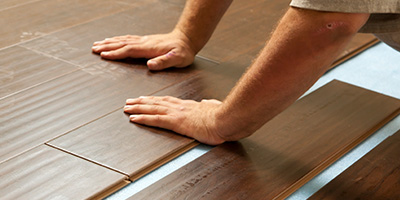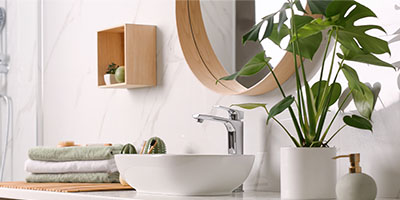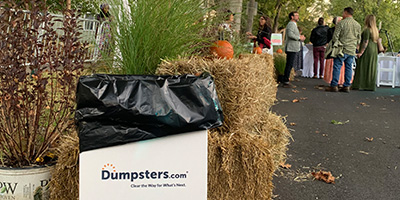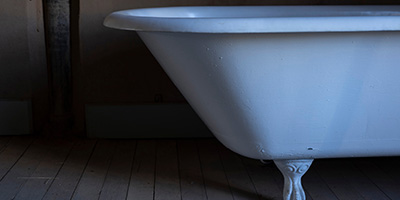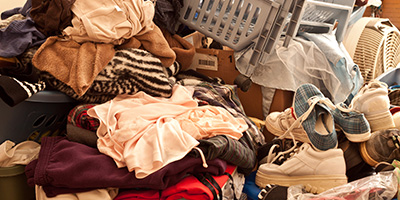A Beginner's Guide to Living With Less
Embracing minimalism can help lower stress and make room for what you truly enjoy, but how can you start living with less stuff?
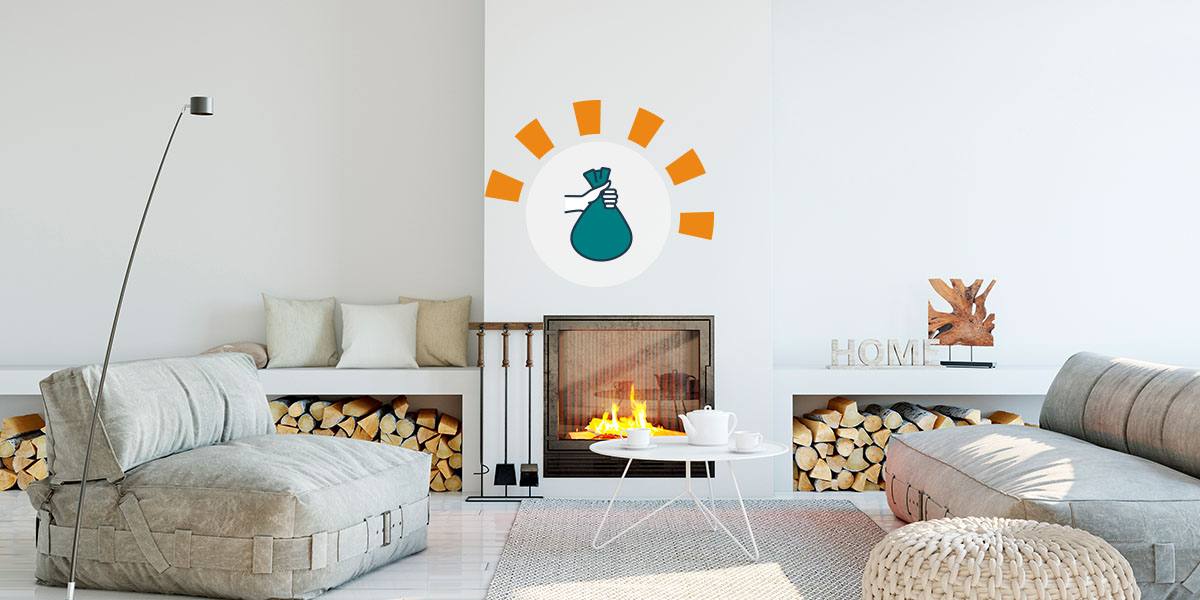
First, What Is a Minimalist Lifestyle?
Minimalist living is not necessarily a new concept and offers those who embrace it freedom from clutter both mentally and within their living spaces. To put it plainly, minimalism is living with less. There isn’t one true definition of minimalism and it is all about what the individual values filling their life with. Living with less can mean less physical clutter, but it can also mean less social or emotional clutter too. Minimalism is keeping the objects and routines that “spark joy,” as Marie Kondo put it in her hit Netflix show.
We talked to Rachelle Crawford, author of "Messy Minimalism" and founder of Abundant Life With Less, and Michael Ofei, author and founder of The Minimalist Vegan to learn all about the practice of minimalism and how someone can incorporate the practice into their lives through decluttering.
Benefits of Living With Less
Minimalism offers those who embrace it a prioritization of what they value most. It allows many to spend less money on things, less time cleaning or organizing, and more time on experiences. For minimalists, removing the clutter from your home is removing distractions and making room in your life for the things you truly enjoy.

"Minimalism offers freedom from chasing what will always remain out of reach. While 'minimalism' as an aesthetic or design concept may move in and out of style with designers, for those of us who have adopted a minimalist mindset, it shapes the way we approach material possessions entirely. It isn't a trend, it's a lifestyle."
How to Be Minimalist: Where to Begin
Deciding to completely embrace minimalism and get rid of all your belongings is not for everyone. Introduce minimalism into your life slowly by decluttering using the method can be a great way to incorporate the idea into your life. If you’re looking to kick start spring cleaning, or are hoping to refresh an old space, minimalism can help you successfully edit your belongings and prioritize what is in your home.
FAQs for Minimalist Organization
Minimalism comes from an art movement started in New York City in the late 1960s that was characterized by extreme simplicity.
No. Many consider decluttering to be the act of removing surface-level possessions, like clearing old mail on a counter or beauty products on a nightstand, and minimalism to be a lifestyle of living with less.
Minimalism is a lifestyle of surrounding yourself and focusing on what brings joy to your life. For many, it is a rewarding process and results in less stress. Of course, every movement’s impact depends on the individual.
Surround yourself with the items that bring joy to your life and make you happy. Keep belongings that bring peace into your home and change your routines to cut consumerism.
8 Minimalist Tips to Edit Your Home
Once you have determined a minimalist lifestyle is for you, it can be challenging to know where to start. Do you begin in the home, and if so, what room do you start in? Should you begin with what you can see, and what do you do once you’ve edited down your belongings? Below we offer eight steps to help you begin the decluttering process.

1. Start Small
As we said, embracing minimalism can be difficult and overwhelming at first. Starting with a small room can feel more manageable, and help boost your confidence to keep the decluttering process going.

“When decluttering, start small, but not too small. Choose an area of your home that will offer the biggest reward with the least amount of resistance. That area will be different for everyone. The space you choose shouldn't overwhelm you, but it should also make an impact in your day-to-day.”
“I would recommend you avoid beginning by decluttering your entire basement or storage unit," Crawford said. “Instead choose a smaller space you use every day such as your wardrobe, coat closet, or bathroom. This way you'll gain experience and wisdom to later tackle those larger, often more sentimental areas.”
Below are some room-by-room recommendations:
- Kitchen: A utensil holder or countertop
- Bedroom: A nightstand or bedside table
- Home Office: The surface of your desk
- Bathroom: A bathroom vanity
- Living Room: A bookshelf
- Closet: A clothing rack

2. Ask Yourself Questions About Your Belongings
Once you’ve decided where you are going to start, you can begin to take note of what you already own. Asking questions like: what do you do, when did I last use you, how did you get here, can you be digitized, minimized or replaced, and can I get another – can help you understand what an item means to you, and what need it is fulfilling. If you're not sure which questions to ask, look for a flow chart online to give you more ideas.

3. Use the Three-Box Method for Decluttering
Once you have looked over the items you own, begin to sort them based on the answers to your questions. Using the "three-box method" helps you stay organized through the decluttering process. The three-box method suggests you create three categories: keep, contemplate and remove.

"Much of the overwhelm regarding decluttering stems from not knowing the end-to-end process of how you discard things. Before diving into a project and quickly getting sidetracked (and sometimes amused) with all of your old possessions, take the time to map out all of the possible destinations for your things."
The "keep" box is as straightforward as it sounds. These objects fulfill a purpose and will stay in the home.
The "contemplate" box is for items you are unsure about. To figure out where this item goes, try keeping it in the box for 30 days. If it is removed for use it should be kept, but if it remains untouched, it should be removed from the home.
The "remove" box is for belongings you no longer need or want. These items can be recycled, donated or thrown away. For things that are not worth donating or recycling it is important to find a safe and convenient disposal option.

"The beauty about destination piles is that you can deal with each at once, batch recycle, or take photos and write descriptions for all the things you need to sell in one afternoon."

4. Find Everything a Home
Once you have assessed all of your items appropriately, it is important to find a space for them to belong. Make sure you are putting your items in corresponding rooms and tucking them in drawers to reduce the amount of visual clutter in your space. If you cannot find space for that item in your home, it is likely that it is not a necessary item.

5. Try Creative Storage Solutions
Finding unconventional ways to display or store your items can help you find space for important things that are not frequently used, while still minimizing the amount of clutter in your home. Take advantage of your wall space, use plastic containers and invest in furniture with built-in storage. These tricks can help remove the visual clutter in your home and make room for essential belongings.

6. Move Room by Room
Continue your minimalist journey throughout your home. Move from one area to the next to keep the process manageable. Set a realistic timeline to accomplish your decluttering goals. Minimizing clutter is a large undertaking. Set a timeline with considerations like the size of your job and the time you have to dedicate to decluttering so you don't feel overwhelmed. Don't forget to reward yourself so you feel motivated to keep things moving.

7. Simplify Your Routines and Cut Consumption
Changing your routines can also help you cut down the clutter. Consider using and purchasing fewer skincare products, cleaning sprays and clothing to help embrace a more minimalistic lifestyle both in your home and day-to-day activities. Instead, invest in high-quality items that will last you years to live with less.
When it comes to assessing your home during the decluttering process, it's important not to buy anything new, including storage, until you have edited down all your belongings and have created a new routine.

“I encourage readers to start their minimalist journey with a 40-day spending freeze, halting all inessential purchases for 40 days. What this spending freeze does is provide an aerial view of where your money is going and how items are entering our homes. It gives us a chance to assess what is driving us to over-consume.”
“There are many driving forces of consumerism such as fear, comparison and a distraction from life stressors,” Crawford said. “Gaining an understanding of why your home has become so cluttered will equip you as you declutter your home and work to maintain it going forward.”

8. Follow the "One In, One Out" Rule
After you have effectively decluttered your space, the “One In, One Out” rule can help you keep the clutter out. Remove one old item from the home once a new one is introduced to help prioritize your purchases and cut overall consumption.
Minimalism Looks Different to Everyone
Overall, minimalism can be an extremely rewarding process, but it’s not one size fits all. Some items may evoke different emotions depending on the person. When it comes to decluttering like a minimalist, the most important rule to remember is to keep the things that make you happy. Allow yourself to focus on the item’s function or the memory it produces. There is no true timeline for the decluttering process. To declutter like a minimalist, take as much time as you need to move through your home intentionally.
Expert Contributors
Rachelle Crawford
Rachelle Crawford is the author of Messy Minimalism and founder of Abundant Life with Less. She makes minimalism doable by offering a grace-based approach to living clutter-free. She lives in Michigan with her husband and three children where she also works as a school nurse.
Find Rachelle on Social Media
Michael Ofei
Michael Ofei is the author of The Minimalist Vegan: A Simple Manifesto On Why To Live With Less Stuff And More Compassion and creator behind The Minimalist Vegan, a website dedicated to providing evergreen articles about minimalism, veganism and sustainable living. His work has been featured in HuffPost, WebMD and Lifehacker. Michael likes to strip things back to the essentials to enjoy simple living with his wife and dog in Tasmania, Australia
Find Michael on Social Media
What Do You Think?
Has embracing minimalism helped with your decluttering project? Let us know
Head over to Twitter or Facebook, and use #dumpstersblog to join the conversation.


